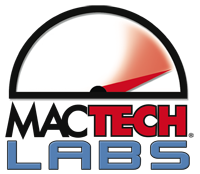Virtualization Benchmarks
By Neil Ticktin, Editor-in-Chief/Publisher
Head-to-Head: How do VMware Fusion 5 and Parallels Desktop 8 for Mac compare?
Why Virtualization?
In 2005, Apple announced the switch of the Mac platform from PowerPC to Intel processors (the first Intel-based models were available in early 2006). This introduced some interesting opportunities for the Mac, including the ability to run operating systems other than Mac OS X on a Mac. This includes not only your everyday Windows 7 or 8, but also other 64-bit OSes including Linux and more.
You may already understand your options for running Windows on a Mac, but in case you don't, your first choice is to decide between Apple's Boot Camp, and a virtualization product like VMware Fusion or Parallels Desktop for Mac. With Apple's Boot Camp, you can run Windows 7 natively, but you have to reboot every time you want to switch between OS X and Windows. In addition, you can only use one OS at a time, it's designed for Windows not Linux, and it doesn't have support for Windows 8 or even XP. Despite a speed advantage for some things, that's not particularly convenient. For that reason, MacTech recommends a virtualization product for most users.
In addition, virtualization gives "switchers" (those switching from Windows to Mac) more comfort because they can use their old applications and more easily get to their old data. It gives all Mac users the ability to use some critical piece of software not available on the Mac. For example, your job may require you to run Internet Explorer, the Windows version of Outlook, or some other possibly vertical market software that your corporate systems support. Or, you may simply want to play a Windows game not available on the Mac.
With virtualization, like you'll see in Parallels Desktop for Mac or in VMware Fusion, you can run Windows alongside OS X, getting the best of both worlds. For many, this may mean running Windows in a "window" on your Mac. Both VMware Fusion and Parallels Desktop also have the ability to run Windows applications even more transparently or full screen, but we'll leave that for another discussion.
Your final option is to use Parallels Desktop for Mac or VMware Fusion to access/use your Boot Camp volume rather than a virtual hard disk. This gives you the option of sometimes booting Windows natively, and other times, using the volume for virtualization. As the performance of doing this has improved so much, this has become a viable option for users.
The Big Question
So which virtualization product do you go with? Which solution is faster? Should you run Windows 7 or 8? One virtual processor or more? Can you run OS X in a virtual machine? In short, there are different answers for different people; it all depends on your needs. More and more, virtualization can accommodate whatever your needs might be.
To tackle this problem, MacTech has once again undertaken a huge benchmarking project. We often wait, as we did this year as well, for a patch or two after major upgrades to give time for major new versions to shake out because it often has impact on the testing. This is similar to the virtualization benchmarking projects that MacTech undertook in past. In both cases, as with other MacTech benchmarks, we tested performance of the types of things that everyday users typically do. In this case, it was not just testing the raw performance of the Windows OS, but also commonly used Windows applications. Like last time, based on reader feedback, we paid attention to 3D graphics and gaming. We also looked at how well the products performed supporting the new Retina screens.
The goal was to see how VMware Fusion and Parallels Desktop performed, under Windows 7 and Windows 8. Furthermore, we wanted to see some of the differences with different Mac models with different graphics and processor types.
To be clear, this article is not a product review; it's a benchmarking analysis. The article's purpose is to assess performance (including issues we found if something didn't work as expected), and not product features, user interface, etc. You should use your assessment of features, user interface, and support in conjunction with this article's benchmarking results to make your product choice.
Before you ask why other solutions and products were not included, let's answer that. This benchmark project is already huge with thousands of collected data points crossing four guest OSes (Windows 7, Windows 8, OS X Lion, and OS X Mountain Lion), five models of computers with mechanical hard drives and SSDs, and over 60 tests each run 3-5 times for most of the environments. There were several thousand tests to be completed, many with a stopwatch. That's all before a single word of this article is written!
To add even one product would increase this huge test matrix by 50%. As a result, we focused on the two leading commercial virtualization products that come with support. These two products also have free trial versions that you can compare against other solutions (i.e., try before you buy).
One thing to note, however, is that open source and other free products may not be for everyone, especially non-technical users. For many, these offerings can be difficult to understand and install, and they do not have technical or product support behind them. Obviously, users can reach out in forums and the community, but if you don't understand something, you won't be able to pick up the phone and call support the way you can with a commercial product. If that works for you, great! If not, as is the case for most users, then a commercial product is likely your solution.













